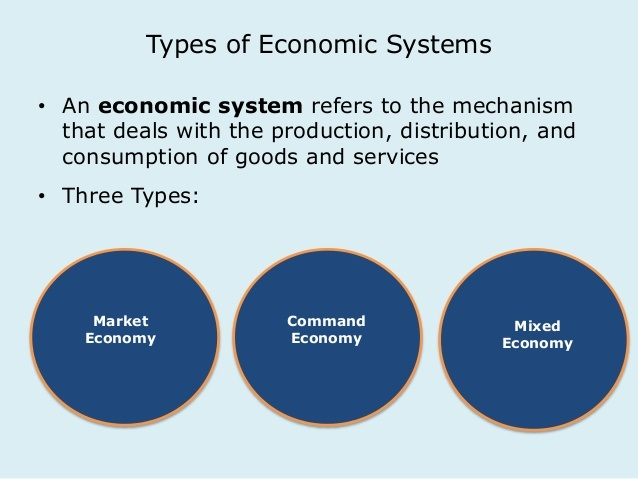Unit 2: Economic Systems
Unit 2: Economic Systems

Unit 2: Economic Systems
 Unit 2: Economic Systems
Unit 2: Economic Systems
Economic systems are the institutional arrangements and mechanisms through which societies allocate resources, produce goods and services, and distribute them among individuals and groups. Different economic systems vary in terms of the degree of government intervention, private ownership of resources, and the coordination of economic activities.
Key types of economic systems include:
Market Economy: In a market economy, also known as capitalism or free-market economy, the allocation of resources and production decisions are primarily determined by market forces of supply and demand. Private individuals and businesses own the factors of production (land, labor, capital) and make decisions based on self-interest and profit motives. Prices serve as signals that guide resource allocation, and competition fosters efficiency and innovation. Government intervention is minimal, limited to enforcing property rights, contracts, and regulations to ensure fair competition and protect public welfare.
Command Economy: In a command economy, also known as socialism or communism, the government owns and controls the means of production, distribution, and allocation of resources. Economic decisions are made centrally by government authorities, who determine what goods and services will be produced, how they will be produced, and for whom. Prices, wages, and production quotas are set by government planners, rather than determined by market forces. The goal is often to achieve social equity, economic stability, and collective welfare, although command economies may face challenges such as inefficiency, lack of incentives, and shortages.
Mixed Economy: A mixed economy combines elements of both market and command economies, with varying degrees of government intervention and private enterprise. Most modern economies are mixed economies, where governments play a role in regulating markets, providing public goods and services, redistributing income through taxation and social programs, and correcting market failures. Private ownership and market competition coexist with government involvement in areas such as education, healthcare, infrastructure, environmental protection, and social welfare.
Traditional Economy: In a traditional economy, economic activities are based on customs, traditions, and cultural practices passed down through generations. Production methods, consumption patterns, and resource allocation are determined by social norms and rituals rather than market forces or government intervention. Traditional economies are often found in rural, agrarian societies where subsistence farming, hunting, fishing, and barter systems prevail. While traditional economies may offer stability and social cohesion, they can also be resistant to change and technological innovation.
The choice of economic system depends on a country's historical, cultural, political, and institutional factors, as well as its goals and values. Each economic system has its strengths and weaknesses, and the debate over the optimal economic system continues to evolve as societies grapple with challenges such as inequality, globalization, technological disruption, and environmental sustainability.
Vocabulary
Lesson Reading
Videos and Interactives (Click on Images to View Content)

